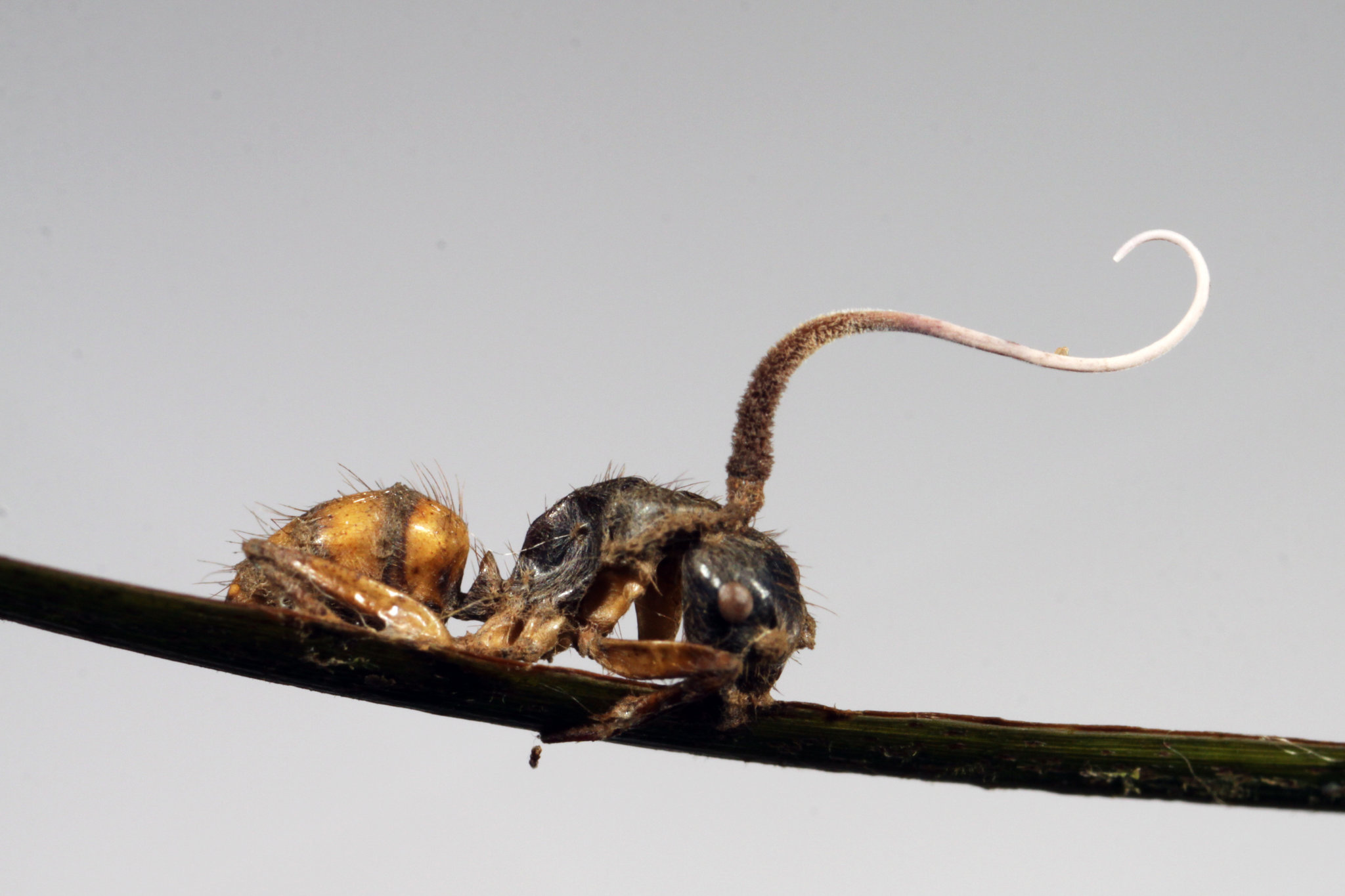In the opening scene of the HBO TV show Last of Us, an epidemiologist speculates about the fate of the world. It’s 1960 and he has been invited to speak on a talk show. The interview starts out normally enough, but as he continues, his words become more and more haunting. “There are some fungi who seek not to kill… but to control. Viruses can make us ill, but fungi can alter our very minds… Fungal infection of this kind is real, but not in humans. Fungi cannot survive if their host’s internal temperature is over 94 degrees. And currently, there are no reasons for fungi to evolve to be able to withstand higher temperatures. But what if that were to change? What if… for instance, the world were to get slightly warmer? Well, now there is reason to evolve. One gene mutates and any number of fungi could become capable of burrowing into our brains and taking control not of millions of us, but billions of us.”
60 years later, his words have turned into a cruel prophecy. The fungus ophiocordyceps unilateralis has spread to the human population. Now there are only small pockets of survivors from the outbreak, grouped together in quarantine zones. The rest of the population has turned into violent zombies, intent on spreading the fungus by any means necessary. How has the global position turned this unstable? In 2003, the show explains, the mutated cordyceps fungus tainted the grain in a factory in Indonesia. A worker at the factory was the first victim of the fungus. She attacked three coworkers before being put down by the police. By the time the infected grain was discovered as the likely source of the outbreak, it was too late. It had already been shipped across the globe and delivered to grocery stores and restaurants everywhere. Simultaneously around the world, humans are infected with the fungus. The effect is immediate. Cognitive functions are hijacked by the cordyceps, and the newly formed zombies only have one goal: to attack the uninfected and to spread the outbreak (Yee and Lincoln).
One may think that this is just far-fetched science fiction. However, the zombie fungus in Last of Us is based on something found in nature. The ophiocordyceps unilateralis inhabits tropical rainforests, targeting ants instead of humans for their mind manipulation. In order for this to happen, a spore from the fungus has to land on an ant. From there, the cordyceps infiltrates its exoskeleton and forces the ant to move to a place where the light and humidity are optimal for the fungus’s growth, usually the underside of a leaf. Then the ant is made to clamp its jaws down on the stem of the leaf, holding itself in place. The ant is killed while the fungus slowly drains it of nutrients, beginning to grow in earnest. After a day, a stem bursts through the ant’s head. After three weeks, spores have grown onto the end of the stem. They are dispersed by the wind, and the process begins again (Puckett-Pope).
The science behind the fungus’s mind control is not fully understood. It is known that when the fungus breaches the exoskeleton, it kills the neurons connecting the brain and the nervous system. As a result, the fungus has complete control of the ant’s movement, but the ant’s brain remains intact. From there, scientists have two leading theories. The first is that the fungus physically manipulates the ant with thin filaments called hyphae. They move the ant’s limbs with these strands, forcing it to jerkily walk to the location preferred by the fungus. The second theory is that the fungus chemically manipulates the ant by sending undiscovered chemical signals that force its muscles to contract in the same way that the brain would (Evans). In reality, how the fungus controls the ant is probably a mix of these two theories. Perhaps hyphae spread into the limbs and deliver chemical signals themselves. But no matter the cause, the result of these physical and chemical manipulations is undeniably frightening.
Although the fungus’s manifestations in ants are scary, it is unlikely that they will adapt to human hosts. The limiting factor between transmission from ants and humans is not, as Last of Us claims, human body temperature. Instead, scientists think, the chemical signals sent by the fungus to control the ant would not translate to the human body (Heyward). The fungus cannot even manipulate other families of insects, so the human body, they speculate, would be too much of a jump. The ophiocordyceps unilateralis fungus, though scary, won’t be turning us into zombies anytime soon.






